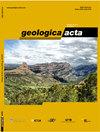Source rock and shale oil potential of the Pabdeh Formation (Middle–Late Eocene) in the Dezful Embayment, southwest Iran
IF 2
4区 地球科学
Q2 GEOLOGY
引用次数: 4
Abstract
The Pabdeh Brown Shale Unit (BSU) is an organic-rich calcareous mudstone within the Paleogene Pabdeh Formation, which has not yet been investigated in detail. A total of 166 core and cutting samples were selected from four wells in the Dezful Embayment to investigate the organic geochemical and the mineralogical compositions, as well as the shale oil potential of the BSU. XRD results show that it is mainly comprised of calcite (53wt.%), clay minerals (25wt.%), and quartz (14wt.%). TOC contents generally range from 1 to 9wt.% (avg. 4.2, 2.9, 5.2 and 3.3wt.%, for GS, KR, RR and RS wells, respectively) with HI values ranging between 400 and 650 mg HC/g TOC. Based on average values of T max and vitrinite reflectance, as well as saturate biomarker ratios, the BSU is immature at wells RR and RS (ranging from 0.3 to 0.53%) and its maturity increases northward at wells KR and GS (ranging from 0.5% to 0.67%). The organic matter is dominated by Type ΙΙ kerogen and is generally composed of liptinite and amorphous material with minor terrestrial input. Based on various biomarker parameters, the organic matter was most likely deposited under anoxic marine conditions. The mineralogical characteristics ( i.e. presence of brittle minerals) and organic geochemical properties ( i.e . TOC >2wt% and Type II kerogen) support the conclusion that the Pabdeh BSU displays a considerable shale oil potential where it attains appropriate thermal maturity.伊朗西南部Dezful海湾地区Pabdeh组(中晚始新世)烃源岩和页岩油潜力
Pabdeh Brown Shale Unit (BSU)是古近系Pabdeh组中的一种富有机质钙质泥岩,目前尚未对其进行详细的研究。选取了4口井166个岩心和岩屑样品,研究了BSU的有机地球化学和矿物组成,以及页岩油潜力。XRD结果表明,其主要成分为方解石(53wt.%)、粘土矿物(25wt.%)和石英(14wt.%)。TOC含量一般在1 ~ 9wt之间。%(平均4.2,2.9,5.2和3.3wt。%(分别为GS、KR、RR和RS井),HI值在400 ~ 650 mg HC/g TOC之间。根据tmax和镜质组反射率平均值以及饱和生物标志物比值可知,RR和RS井的BSU未成熟(范围为0.3 ~ 0.53%),而KR和GS井的BSU成熟度向北升高(范围为0.5% ~ 0.67%)。有机质以ΙΙ型干酪根为主,主要由岩质岩和无定形物质组成,陆源输入较少。综合各种生物标志物参数,有机质极有可能是在缺氧海洋条件下沉积的。矿物学特征(即脆性矿物的存在)和有机地球化学特征(即TOC bbb20 %,干酪根类型II)支持了Pabdeh BSU在达到适当热成熟度时显示出相当大的页岩油潜力的结论。
本文章由计算机程序翻译,如有差异,请以英文原文为准。
求助全文
约1分钟内获得全文
求助全文
来源期刊

Geologica Acta
地学-地质学
CiteScore
2.50
自引率
6.70%
发文量
13
审稿时长
>12 weeks
期刊介绍:
- Relevant conceptual developments in any area of the Earth Sciences.
- Studies presenting regional synthesis.
- Thematic issues or monographic volumes presenting the results from one or more research groups.
- Short papers reflecting interesting results or works in progress.
- Contributions and results from Research Projects, Workshops, Symposiums, Congresses and any relevant scientific activity related to Earth Sciences.
- Geologica Acta aims to stimulate rapid diffusion of results and efficient exchange of ideas between the widespread communities of Earth Science researchers (with special emphasis on Latinamerica, the Caribbean, Europe, the Mediterranean
 求助内容:
求助内容: 应助结果提醒方式:
应助结果提醒方式:


